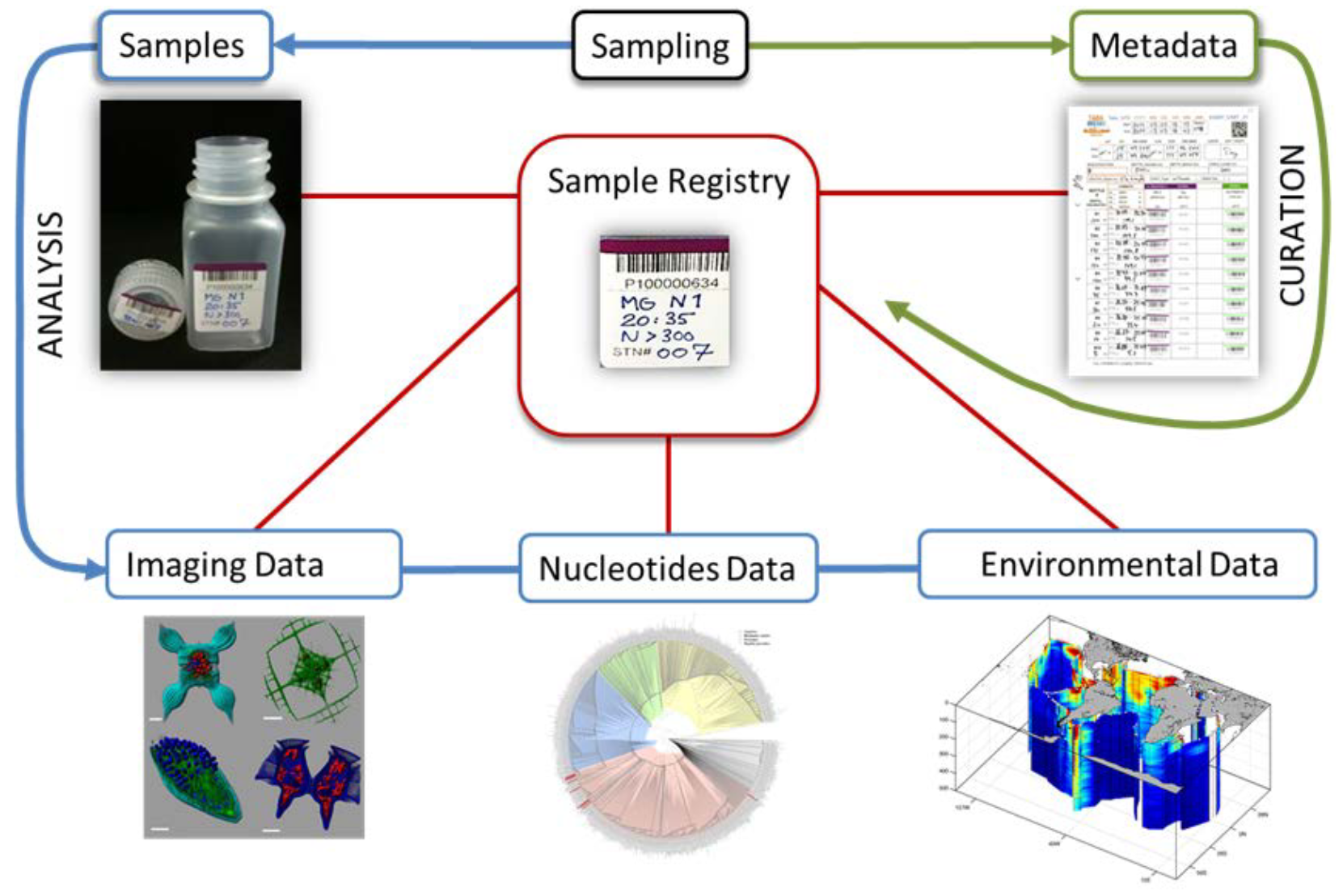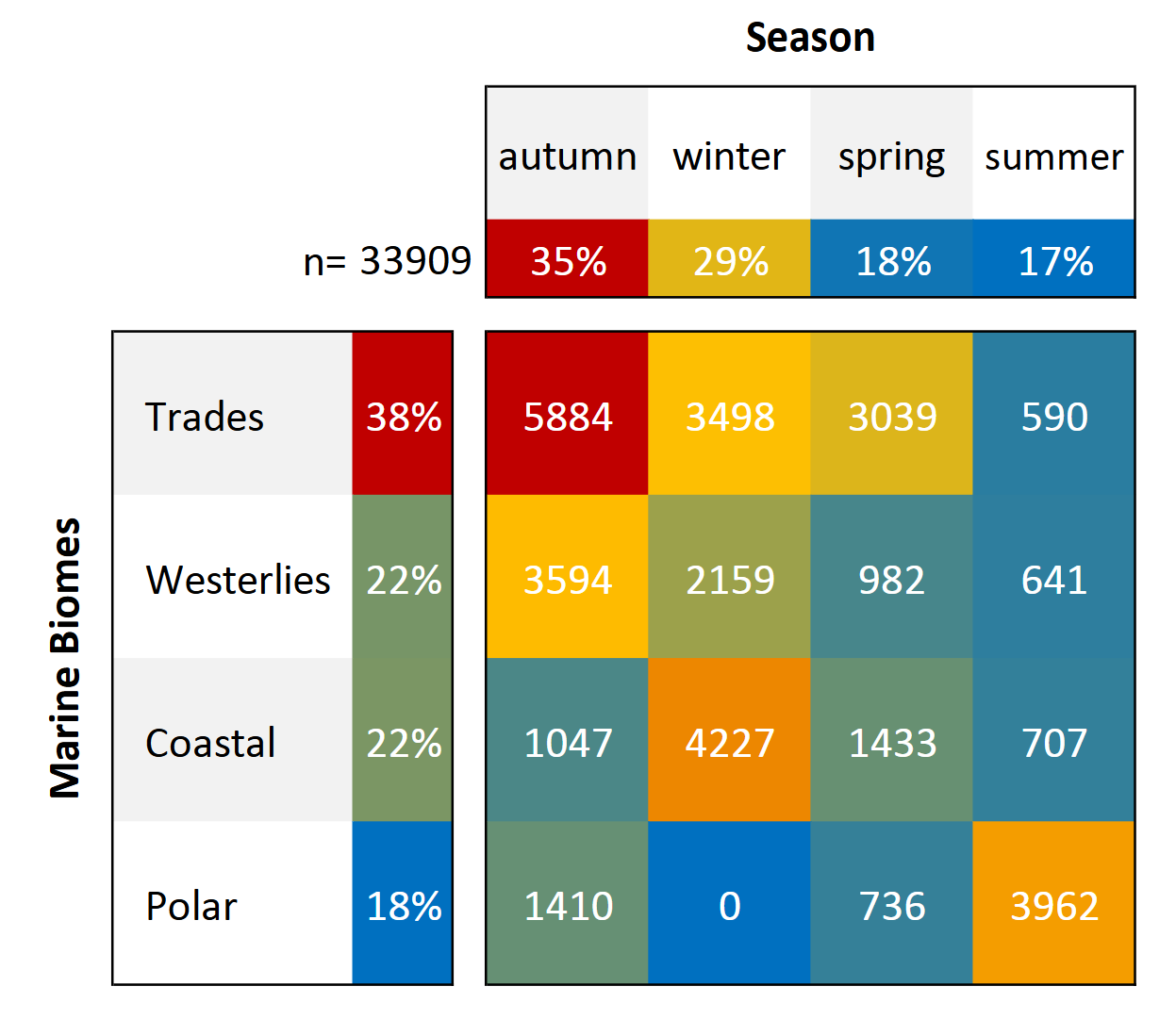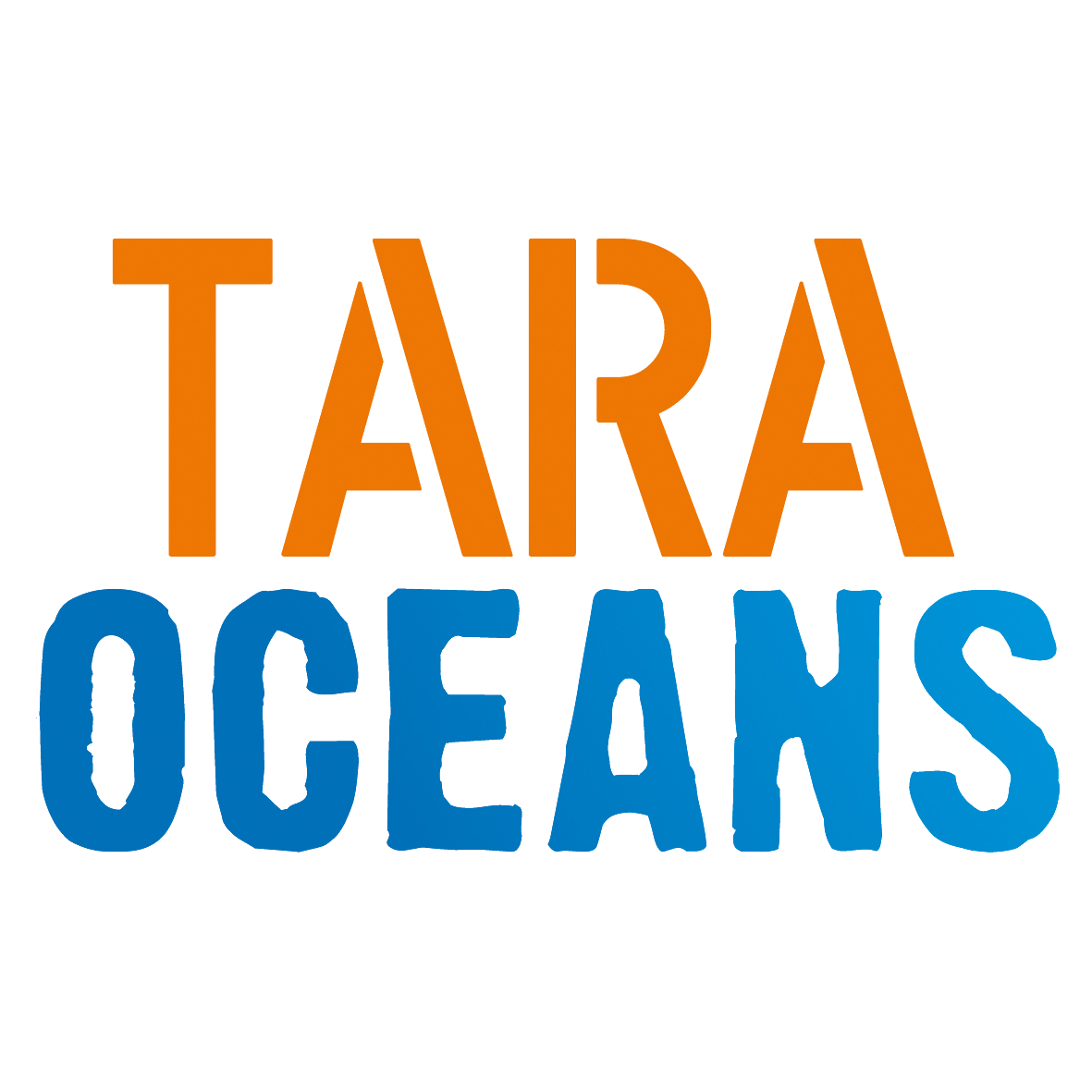Sample Provenance
- Described in Pesant et al. (2015) https://doi.org/10.1038/sdata.2015.23
- Campaigns: https://doi.org/10.1594/PANGAEA.842191
- Stations: https://doi.org/10.1594/PANGAEA.842237
- Events: https://doi.org/10.1594/PANGAEA.842227
- Samples: https://doi.org/10.1594/PANGAEA.875580
Sequencing Methods
- Described in Alberti et al. (2017) https://doi.org/10.1038/sdata.2017.93
- Links to sequencing data (runs) at ENA: https://doi.org/10.1594/PANGAEA.875581
Sample Environmental Context
- Complete collection: https://doi.org/10.1594/PANGAEA.875582
- Mesoscale features: https://doi.org/10.1594/PANGAEA.875577
- Water column features: https://doi.org/10.1594/PANGAEA.875579
- Discrete depth measurements (sensors) context: https://doi.org/10.1594/PANGAEA.875576
- Discrete depth measurements (nutrients) context: https://doi.org/10.1594/PANGAEA.875575
- Discrete depth measurements (pigments) context: https://doi.org/10.1594/PANGAEA.875569
- Discrete depth measurements (carbonates) context: https://doi.org/10.1594/PANGAEA.875567
- Annual cycle of daily remote sensing parameters @9km spatial resolution: https://doi.org/10.1594/PANGAEA.883613
- Annual cycle of daily remote sensing parameters @100km spatial resolution: https://doi.org/10.1594/PANGAEA.883614


Figure 2. Tara Oceans (TO) strategy for samples, data, and metadata archiving and integration. Upper part: the origin of the ~40,000 samples is key to connecting biological, chemical, and physical data, and Tara Oceans has set the trend in marine science with the most comprehensive registries of sample provenance and context to date (Deliverables B, C). Bottom part: Example of a contextual heatmap based on TO sample registries, indicating how available samples are distributed with respect to their origins and environmental contexts.
